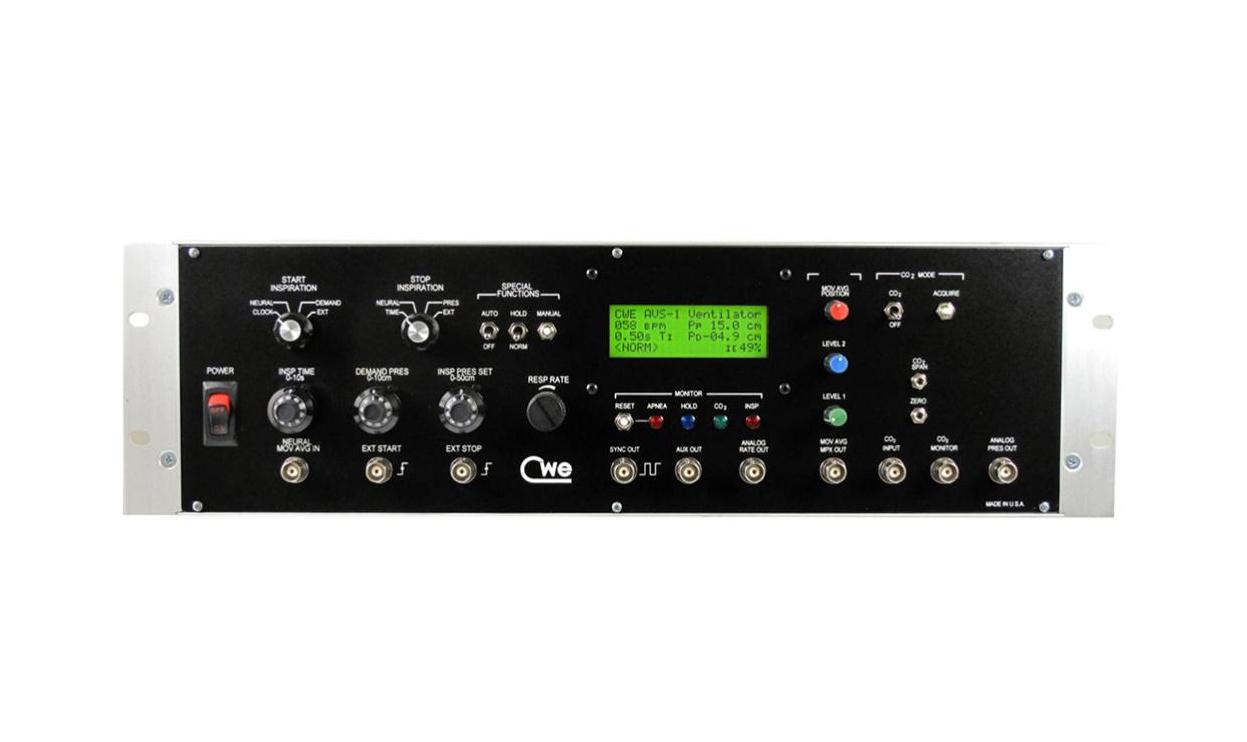Cycle-triggered ventilation
AVS-1 Cycle-triggered Ventilator
- Applications include routine respiratory support or control-of-breathing studies
- Versatile ventilator with numerous control modes
- Normal Timed constant Tidal Volume
- Pressure-cycled ventilation
- Neural-controlled ventilation using Moving Average signal
- Constant CO2 mode
- Demand mode triggering
- External inputs for controlling ventilator operation
- Wide Tidal Volume range using External Valve Assemblies
- Compatible with inhalation anesthesia
- Respiratory rate range: 4 - 250 breaths/min
- Inspiratory time range: 0 - 10.0 sec
- Tidal volume range (VA-1): 0.1 - 20 ml
- Tidal volume range (VA-3): 4 - 100 ml
- Information display panel: 4 x 20 LCD, Resp Rate and operator messages
- Analog rate out: 10mV/br/min
- Pressure control range: 0 - 50cmH2O
- Analog pressure out: 10mV/cmH2O
- Logic inputs and outputs: TTL positive
- I-sync and E-sync pulses: 100uS TTL
- CO2 control input range: +5V
- Phrenic control input: +5V
- Input and Output connectors: BNC
- Data Port connector: DB-25S
- Power requirements: 120/240V, 25VA
- Dimensions (rack mountable): 19 W x 5.5H x 12D in.
- Power requirements: 120/240V (switchable), 100VA
The AVS-1 Advanced Ventilator System is a versatile, microprocessor-based animal ventilator. It performs volume cycling, pressure cycling, and neural control of ventilation. Additional features include pressure-demand triggering, constant CO2 ventilation, and facilities for external control of ventilator function. The AVS-1 is capable of ventilating animals ranging from mice to cat-size by plugging in the appropriate external valve assembly.
As a flow-time ventilator, inspiratory volumes are generated by gating a constant flow into the animal for a given time. This approach permits great flexibility in respiratory timing, since respiratory rate (RR), inspiratory time (TI), and airflow are all independently set. In addition to constant volume ventilation, inspiration may be terminated by a variety of events, including end-inspiratory pressure.
The controls of the AVS-1 are logically arranged into functional groupings. The primary groups are start inspiration and stop inspiration. For example, inspiration can be started by a clock, the onset of Phrenic nerve activity, inspiratory effort of the animal (demand), or by an external logic signal. Inspiration is terminated by a set of similar functions. These modes can be mixed; e.g., you can initiate inspiration using the neural triggering, but terminate with pressure.



